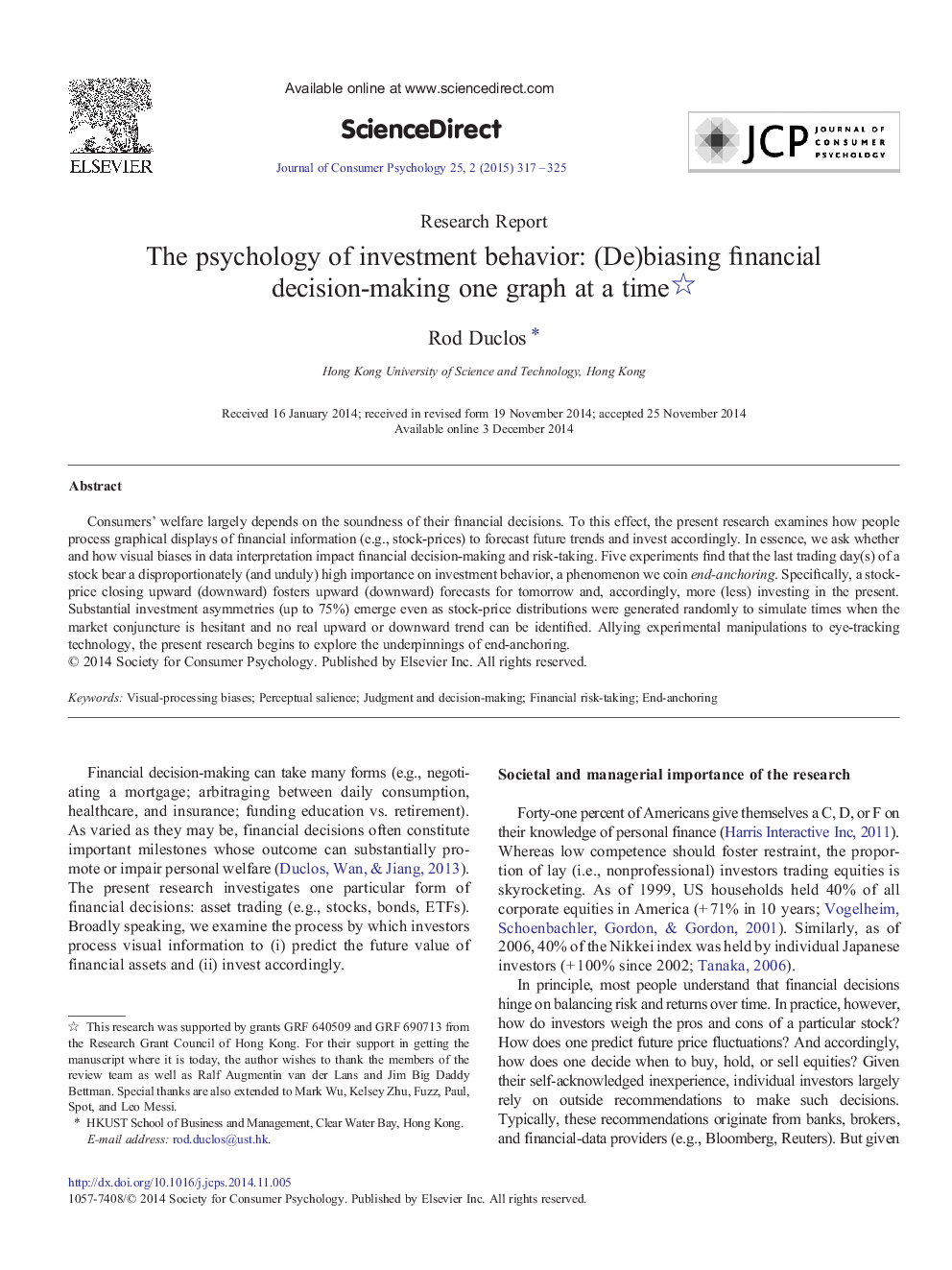| Article ID | Journal | Published Year | Pages | File Type |
|---|---|---|---|---|
| 882169 | Journal of Consumer Psychology | 2015 | 9 Pages |
Consumers' welfare largely depends on the soundness of their financial decisions. To this effect, the present research examines how people process graphical displays of financial information (e.g., stock-prices) to forecast future trends and invest accordingly. In essence, we ask whether and how visual biases in data interpretation impact financial decision-making and risk-taking. Five experiments find that the last trading day(s) of a stock bear a disproportionately (and unduly) high importance on investment behavior, a phenomenon we coin end-anchoring. Specifically, a stock-price closing upward (downward) fosters upward (downward) forecasts for tomorrow and, accordingly, more (less) investing in the present. Substantial investment asymmetries (up to 75%) emerge even as stock-price distributions were generated randomly to simulate times when the market conjuncture is hesitant and no real upward or downward trend can be identified. Allying experimental manipulations to eye-tracking technology, the present research begins to explore the underpinnings of end-anchoring.
